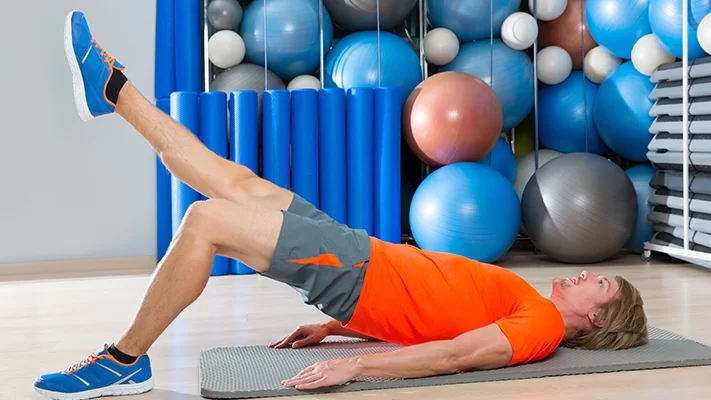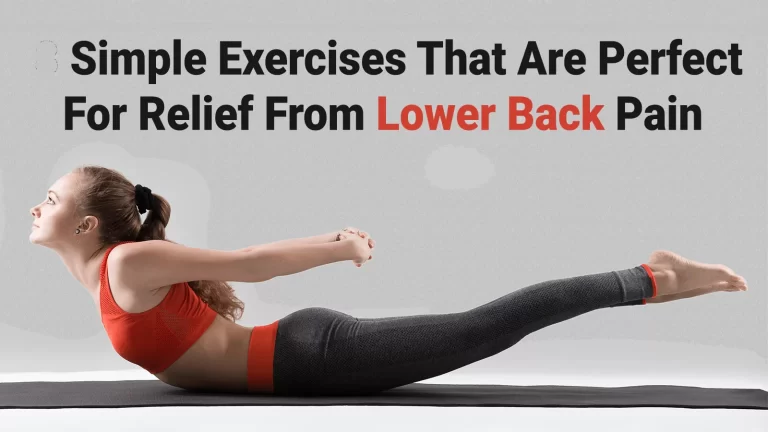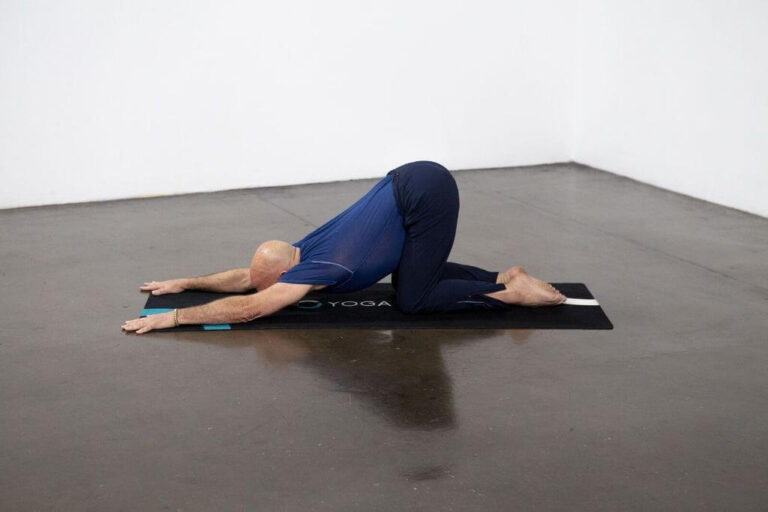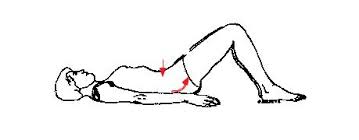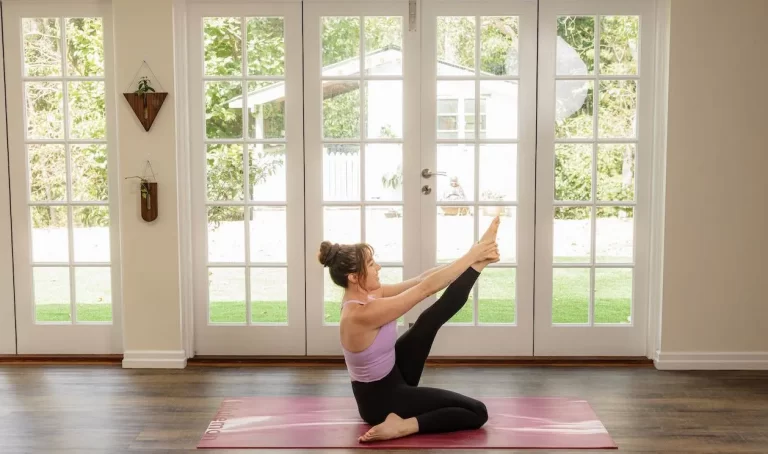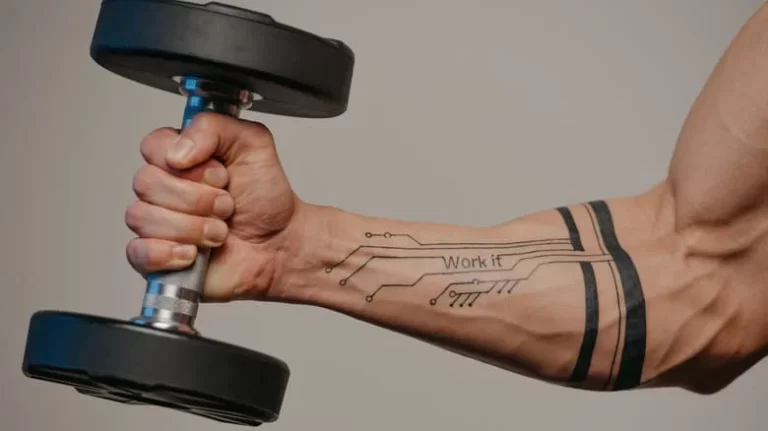Hip Extensor Exercises
What is a Hip Extensor exercise?
Hip Extensor Exercises is a great option to strengthen your gluteal muscles and many health benefits of it.
The hip extension utilises some of your biggest, strongest muscles. This motion is involved in many regular activities, such as getting up from a chair, climbing stairs, and walking. It’s also heavily included in many sports with explosive strength and power. However, with more people sitting for long periods and being less active, the hip extensor muscles may become weaker over time. This may have you wondering how you can maintain your hip extensor muscles strong to support your daily life and activities.
Hip extension happens when you extend or “open” your hip joint so that the angle between the pelvis and thigh increases. It can mean either drawing your leg behind you when standing or utilizing the hip extensor muscles to propel your body forward over your leg when your leg begins to flex in front of you. The hip extension relies on three main muscles: Gluteal muscles, Hamstrings, Adductor Magnus (posterior head).
What are the Health Benefits of Hip Extension exercises?
Let’s quickly see through the benefits you can gain from doing regular hip extension exercises in your workout routines. Remember, you don’t need to perform these exercises every single day to see the benefits, but they are great to include a few times a week. Including a resistance band in your exercises will aid you to realize these benefits more effectively too.
Here are the most essential benefits that you’ll see from hip extension exercises:
- Prevent injuries when playing sports or exercising.
- Prevent chronic and long-term hip injuries.
- Boost the overall health of your hip joints and muscles.
- Burn fat and tone muscles.
- Strengthen the glutes and hamstrings.
- Improve your posture.
- Tone your physique.
Which are the Hip Extension exercises?
The list is below:
- Glute bridges
- Hip thrust
- Quadruped kickbacks
- Step-ups
- Standing kickbacks
- Upright hip thrusts
- Glute bridge and hamstring curl on the stability ball
- Prone hip extension on the stability ball
- Quadruped Hip Extension
- Walking Lunge
- Standing Hip Extension
- Prone hip extension
- Reverse lunge
- Donkey kicks
- Single-Leg Wall Squat
- Four-Way Hip Extension Machine
- Romanian Dead lift With Barbell
- Barbell Good Morning
- Barbell Hip Thrust
- Kettle bell Swing
- Dumbbell Dead lift
- Kneeling Lunge Stretch
- Hip Extension with Band Exercise
- Lying Hip Extensions
- Single-Leg Hip Extensions
- Elevated Hip Extension
- Goblet Squats
- Banded Clam shell
- Single-Leg Romanian Dead lift
- Stability Ball Rotation
- Core Tuck
- Single Leg Bridge
- Standing cable hip extension
- Pilates swimming
- Stability ball hip extension/leg curls
- Partial Dead lifts
- Reverse Hyper extensions
Glute bridges
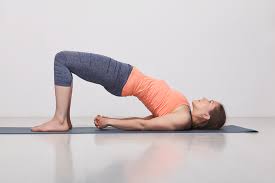
Start by lying on the back with your knees flexed and your arms at your side. The feet should be a hip distance apart. If you’re utilizing a dumbbell, hold it across your hip crease. The feet should be 12–16 inches from your butt.
Compress into your heels, brace your core, and push the pelvis upwards by squeezing your glutes. Raise high enough so that your body makes a straight line from knee to shoulder.
Pause for 2 seconds and lower your hips back to the ground. This is one rep.
Finish 8–12 reps of 2–3 sets.
Hip thrust
Start on the ground with your shoulder blades resting against a secured bench (either has it against a wall or secured to the floor).
Sitting on the ground with your legs straight, put a barbell across the crease of your hips and place your hands around the bar. Alternatively, you can grab a dumbbell.
Next, flex your knees and have your feet about hip-width apart.
Once in position, drive your heels into the floor, brace your core, and push your pelvis upward by squeezing the glutes. At the top of the motion, your shins should be vertical, your torso parallels with the floor, and your knees at 90 degrees. Avoid pushing with your lower back and maintain your chest in the same position throughout the whole motion.
Then, slowly bring the weight back down.
The goal is for 8–12 reps of 2–3 sets.
Quadruped kickbacks
Begin on all fours. Your hands should be aligned under the shoulders and your knees aligned under your hips. Engage your core and make sure the spine is in a neutral position.
Shift your weight to your right side and lift your left leg off the ground. Push your left foot up and back, straightening the knee, as if trying to drive the heel into the wall behind you. Prevent rotating your hips or shoulders — your glutes should be performing most of the work. Take special caution not to arch the lower back. Keep the leg at hip height.
Return your leg to the beginning position. This is one rep.
Do 8–12 reps of 2–3 sets on each leg.
Step-ups
Stand 8–12 inches behind a secured box or bench. Assure the surface will not move.
Lift your left foot on top of the box/bench. The hips, knees, and ankles should all be at 90-degree angles. This is the beginning position.
Next, push the foot into the box/bench and squeeze your glutes to raise your body. Instead of putting your right foot on top of the box/bench, keep it in the air.
Then, lower the body back down. This is one rep.
Repeat this for 15–20 reps. Then, change feet.
Standing kickbacks
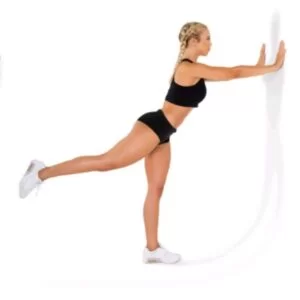
Standing 1–2 feet from a wall, box, or counter, put the palms of your hands against it.
Lean slightly forward and lift your right foot off the ground with your knee slightly flexed. Ensure the core is tight and back straight.
Extend the leg backward around 60–90 degrees, making sure to contract the glutes.
Return your leg to the beginning position. This is one rep.
Finish 8–12 reps of 2–3 sets on each leg.
Upright hip thrusts
Kneel on the floor with your knees around hip-width apart. Your shins should be flat on the ground and the back upright.
With the hands on your hips, push your hips back until your butt is touching the calves.
Then, squeeze the glutes to push your hips forward and back to the beginning position.
Do 8–12 reps of 2–3 sets.
For an added challenge, put a rubber resistance band around the upper part of your thighs and tie the band to a stable pole behind you. Then, do the same exercise.
Glute bridge and hamstring curl on the stability ball
Lie on your back with the calves and feet on top of a stability ball. Your knees will be extended. Put your hands at your sides with palms facing down.
Using your glutes and hamstrings, raise your bottom off the ground so that your body forms a straight line from the upper back to your feet. This is the beginning position.
From this hip extension position, pull the stability ball toward the butt, performing a hamstring curl.
Slowly straighten the legs to return to a straight line. Keep your body lifted off the floor and begin another curl. Or, if you’re opting out of the leg curl, raise and lower your hips with control.
Do 3 sets of 10 reps.
Prone hip extension on the stability ball
Place your lower stomach or hips on the ball. The legs will hang off the back of the ball and your toes should gently touch the floor. Put your hands on the floor in front of the ball with your arms straight.
Squeeze your glutes, and raise your legs off the ground until they are in line with your torso. Keep the core engaged and in contact with the ball. Prevent extending the lower back, and keep your knees straight.
Gently lower the legs back down to the starting position.
Do 10 reps of 3 sets.
Quadruped Hip Extension
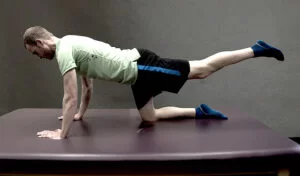
Start on all fours in a tabletop position.
Keeping your arms straight and both knees flexed 90 degrees, squeeze your glutes and press your left sole toward the ceiling as you raise your left thigh. Maintain a 90-degree flexion in the knee.
Pause briefly at the top of the motion, and then lower your left knee gently back down to the ground. Perform all reps on one side before switching to the other.
Walking Lunge
Stand upright with feet hip-width apart and grab a pair of dumbbells at arm’s length down by your sides.
Take a big step forward with your left foot and flex both knees until your front thigh is parallel to the floor and the back knee is bent 90 degrees.
Pause briefly. Then, push through your right foot to step into your next lunge. Continue changing legs with each step, making sure to finish an equal number of steps/reps per side.
Standing Hip Extension
Stand straight with hands on hips (or, if needed, place your hands on a counter or chair for support). To make the move harder, wrap a resistance loop around the ankles.
Keeping both legs straight, squeeze your left glute and push your left leg back until your foot is a few inches off the floor.
Hold briefly, then reverse the motion to return to starting position. Do all reps on one side before changing to the other.
Prone hip extension
Place yourself flat on the ground in the prone position, with your legs stretched out behind you.
Primarily utilizing your glutes and lower back muscles, raise your right leg off the ground as high as it will go while maintaining your core flat.
Lower your leg and lift it again before you touch the ground.
Repeat with the right leg 10-15 times, then switch to your left leg.
You can increase the difficulty of this exercise by lifting both legs simultaneously, rather than individually.
Reverse lunge
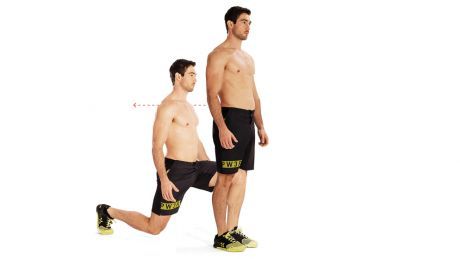
Stand with the feet shoulder-width apart.
Step firmly backward with your left leg and flex both knees until they are at right angles.
Bring your left leg back to the start point.
Repeat the motion for 10 -15 repetitions.
Switch legs and work your right leg for 10 – 15 repetitions.
Donkey kicks
Set yourself on all fours on the ground.
Adjust your pose, so your arms are held straight beneath your shoulders, and the knees are comfortably apart on the floor.
Lift your left knee off of the ground and slowly swing your leg behind you.
Bring your knee back to the beginning position and repeat.
Change legs after 10-15 repetitions.
Single-Leg Wall Squat
Stand with the back to a wall, feet about hip-width apart.
Walk your feet far enough forward that you can squat down into a sitting pose, keeping your back against the wall.
Check to make sure that the knees and toes point in the same direction and the ankles are beneath your knees — not far behind or in front of them.
Permit your back to slide up along the wall as you straighten your legs.
Keep the hips and shoulders in contact with the wall as you continue squatting down — sliding the back down the wall — then pressing yourself back up the wall again.
Four-Way Hip Extension Machine
Step into the four-way hip extension machine and grab the stabilizing bar, or rest your hips against the forward hip pad.
Adjust the machine’s resistance pad so it rests at the knee on the back side of the working leg.
Stand on the free leg as you straighten your working leg at the hip, moving the resistance pad as you go.
Back to your starting position with a smooth, controlled motion.
Repeat on the opposite leg.
Romanian Dead lift With Barbell
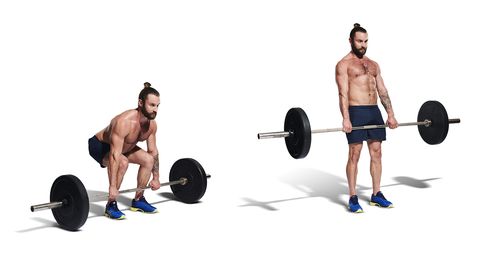
Add weight plates to your barbell and position it on the ground in front of you.
Step up to the bar, shins almost against it, feet placed firmly hip-width apart. Keep your spine tall, chest up and shoulders back and down.
Hinge from the hips and soften the knees as your hips sink low enough to let you grab the bar with your hands shoulder-width apart.
Engage all the muscles of your core to keep this position as you push your feet into the floor as if you were trying to push the ground away from you, and lift the bar.
Raise your chest and engage your lats to stabilize the bar in front of your hips.
Pushing your hips as far back as possible, flex your knees slightly and lower the weight right below knee height.
Barbell Good Morning
Stand tall with a barbell across the shoulders, feet hip-width apart.
Hold the barbell in put with your hands just outside of your shoulders.
Push your glutes back and hinge at the hips, leaning your upper body forward with a slight bend in your knees.
Simultaneously lean your upper forward until your upper body is almost parallel with the floor.
Push the hips forward and reverse the movement to back to standing.
Barbell Hip Thrust
Sit on the floor with the bottom of your shoulder blades on the edge of an exercise bench or box.
Extend your legs out in front of you and roll a barbell up over the hips, placing a cushion underneath the bar for comfort if required.
Flex your knees and place your feet flat on the ground. This is the beginning position.
Keeping the neck long, press into your heels and raise your hips off the floor, lifting the barbell. As you bridge up, the neck and shoulders should move onto the bench.
Hold here for a moment, then lower back down.
Kettle bell Swing
Stand with your feet around shoulder-width apart, knees slightly bent, gripping a kettle bell on the floor between your feet.
Keeping your back straight, shoot your hips back and pull the weight between the legs and under your hips.
On an exhale, push your hips forward and extend your legs, swinging the bell up to chest height with control.
Utilizing the bell’s momentum, swing the weight back between the legs and under your hips as you simultaneously sink into your hips and flex your knees.
Push the hips forward again to go right into the next swing.
Dumbbell Dead lift
Stand with your feet around hip-width apart holding a dumbbell in each hand in front of the thighs, palms facing your body.
Hinge from the hips, softening the knees as your hips sink enough to lower the weights toward the middle of the shins.
Your spine should be tall and long, chest up and open, shoulders back.
Engage all the muscles of your core to keep this position as you push your feet into the floor as if you were trying to push the a group away from you using your glutes and hamstrings, to pull the weights up and back to standing.
Reverse the movement to lower the weights with control and repeat.
Kneeling Lunge Stretch
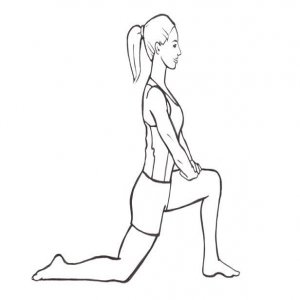
From a kneeling position do a posterior pelvic tilt.
While holding this pelvic tilt, slide the hips forward until you feel a light stretch on the front of your train hip/thigh.
There should be no pressure or pain in the lower back.
Pause the stretch for 1-2 seconds then slide back to release.
Do 10-15 repetitions (concentration on holding the pelvis stable for the entire stretch)
Hip Extension with Band Exercise
Start in a standing position with a resistance band secured to the foot. The opposite end of the band can be secured in a door in front of you.
A chair can be used to assist with balance if needed
Do a posterior pelvic tilt and brace your abdominal muscles. You must keep this tilt for the entire exercise to keep the pelvis and lower back stable.
Now squeeze the glute and pull your leg back. Concentrate on isolating the motion from the hip joint.
Pause the leg back for 1-2 seconds then bring the leg forward again.
Do 2 sets of 10 reps per leg.
Lying Hip Extensions
Begin by laying on your back with your head flat on the floor.
Lay your arms to your side with your palms flat on the floor.
Contract your abs and move the hips upward. Hold at the top and squeeze your glutes, then lower back under control.
Make sure your glutes don’t touch the floor on the way back down to keep the hips and glutes activated.
Single-Leg Hip Extensions
Lie on the floor with your back flat and your head flat on the ground.
Knees bent, feet flat on the floor, and arms lying at your side with palms flat on the floor.
Keep one foot planted on the floor and extend the other leg straight up and out at a 45-degree angle.
Keep the abs tight and drive upward pushing through the heel and using your glutes to propel you up.
Pause at the top, squeezing the glutes then lower back under control stopping just before your glutes touch the floor.
Do your determined amount of reps for one leg, before switching over to the other to finish one set.
Elevated Hip Extension
Rest the upper back on the bench positioning yourself just below your scapulae.
Keep the arms and elbows flat against the top of the bench.
Feet flat on the floor spaced shoulder-width apart.
Drive your hips upward utilizing both them and your glutes to generate the power.
Pause at the top, contracting your glutes, and lower back down under control stopping before your glutes touch the floor.
Make sure to keep the core engaged through this movement as there can be the tendency to relax them in the lower phase which might strain your lower back.
Goblet Squats

Grab the dumbbell or kettlebell at the top of your chest with the head up and feet shoulder-width apart
Breathe in and lower down under control to at least parallel.
Breathe out and drive upwards – but not too fast – pushing through your heels.
At the top of the motion, squeeze the glutes pushing your hips forward.
Pause at the top and then repeat the motion for the set amount of reps.
Banded Clam shell
Pull the resistance band over the legs so it is just above the knees.
Begin by lying on your side on a mat on the ground.
Your knees will be laying on the floor but facing away from your body.
Lift the upper knee upward against the resistance of the band. Pause at the upper and lower back down under control to the starting position
Go through your set amount of repetition before switching to the other side to do the opposite leg.
Single-Leg Romanian Dead lift
Begin standing up straight with the feet shoulder-width apart.
Keep your right foot on the ground and lean forward extending your left leg behind you. Your upper body and left leg should all be parallel to the ground.
Bend your right knee a little to take the pressure off the knee and to isolate the hips and hamstrings.
Stand back up to the beginning position before repeating with the other leg to make up one complete rep.
Stability Ball Rotation
In a tabletop position with your knees on the ball, rotate both knees to the right and then pull yourself back to the beginning position.
You’ll need to engage the core and hips to make this move work.
Core Tuck
From a plank pose with feet on the ball, engage your core and hips to pull the ball into the arms and then with control release it back out to a full plank.
This exercise engages the deep core muscles to make them stronger and aid increase balance and stability in your body.
Single Leg Bridge
Raise your right leg in the air while keeping your left foot on the ball.
Pull the ball into you with just your left foot, while again keeping the hips in the air.
This exercise isolates and strengthens the hip extensors, i.e., your hamstrings and glutes.
Standing cable hip extension
Attach an ankle cuff to the ankle. Fix a low cable to the cuff. Stand facing the cable machine with the arms braced for balance. Flex your non-working leg for extra stability.
Extend your hip out behind you, keeping your leg slightly flexed throughout.
Return to the beginning position and repeat.
The further away you stand from the pulley, the greater the range of motion, and the more demanding this exercise will be.
Pilates swimming
Lie on your front with your arms straightened out in front of you.
Raise your arms and legs a few inches off the floor and kick like you were swimming. Raise your opposite arm and leg.
Continue until you can feel the hip extensors starting to fatigue.
Stability ball hip extension/leg curls
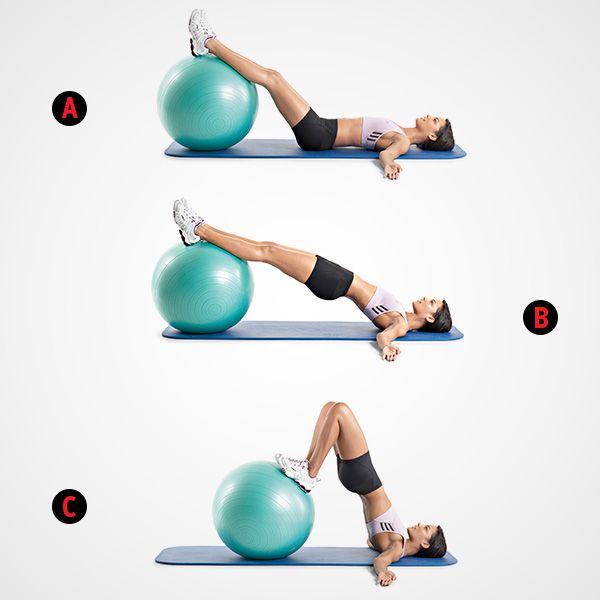
Lie on your back with the legs straight and your calves and feet resting on a stability ball. Raise your butt off the floor, so your body forms a straight line.
Push your hips up and simultaneously flex your legs, rolling the ball in toward your butt.
Extend the legs and, without lowering your butt back to the ground, repeat for the prescribed number of repetitions.
Partial Dead lifts
Start with the bar at knee height.
Squat down until your hands can grab the barbell.
Stick your chest out and pull the shoulders back.
Keeping your arms straight, raise the bar off the rack or blocks. Perform this by extending your hips and knees. When done right, the shoulders, hips, and knees all travel up at the same speed.
This is the kind of movement on which you can work up to a lot of weight. With that in mind, there are two important pointers. First, concentrate on keeping your chest out and shoulders back to protect the lower back. Second, keep your arms straight to avoid a biceps tear.
This exercise is normally performed for up to 8 repetitions per set.
Reverse Hyperextensions
Lie down on a bench with the chest and hips in contact with the bench.
Put a dumbbell between your feet.
Keeping the legs together, lower your legs as far as possible toward the floor.
Keeping your torso and hips in contact with the bench and your legs together, lift the dumbbell as far as your legs can comfortably move. All the motion should come from the hips.
This exercise is normally performed for 8 to 15 repetitions per set.
FAQs
How do you do hip extension?
To do Hip extension exercise:
Keep your hips flat on a hard bed or the floor. Squeezing your buttocks every time, lift your leg off the bed, and push your heel towards the ceiling. After holding for two seconds, lower your leg to its initial position.
Is hip extension a good exercise?
Yes, hip extension is a fundamental movement pattern that is important for overall strength, mobility, and functional fitness. Hip extension exercises involve straightening the hip joint, moving the thigh or pelvis behind the body.
Hip extension exercises offer several benefits:
Improve Strength and Power
Improved Posture
Reduce the risk of Injury
Improve Functional Fitness
What is the purpose of hip extension?
Your hip must extend while you walk or run in order for you to push off and go forward. The glutes play a crucial role in this action. The glutes won’t contract if hip extension isn’t possible. It’s like attempting to use a calculator without batteries to perform maths.
What is the hip extension?
When you extend your hip, your hip joint is opened. Anytime you widen the angle between the front of the pelvis and the thigh, which can begin at any degree of flexion, you extend your hip. Actually, when you stand and when the leg moves behind you, you are in hip extension.

